Roboforum 2014: dossier for 40 speakers and one big question

Do not worry about copyright - the author of the picture will also come to the forum.
Almost a week later, the Roboforum will begin, at which a critical mass of robotics will gather. 1000 delegates, 40 speakers, 35 media. Their lectures, reports and speeches will finally allow to outline the contours of the brave new world waiting for us beyond the threshold of mass robotization. The program of the four days of the forum is on the site .
Just below the list of participants, but first I would like to raise one topic.
')
Imagine what would be the world without the First World War? Probably he would be even more different from what arose. Peaceful changes are not so visible, but they change life more radically. If the Caribbean crisis had led to a third world war, we would say that consumer electronics and mass pop culture are the result of a military break, not a household revolution.
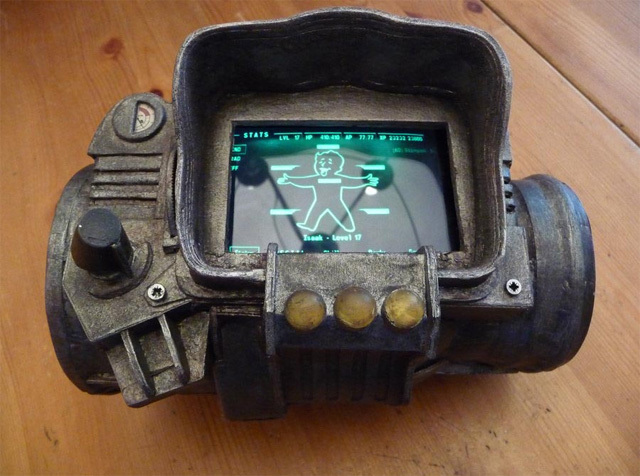
The iPhone could look like this after the Caribbean crisis.
Household revolutions will shake the XXI century and XX will soon become a distant, distant past. Some robots will hit the brain in such a way that it will not seem a little. This is the collapse of all traditional life in the post-ancient era. A coup comparable only with the agrarian revolution.
Take up all this whining of the twentieth century about "slavery". And what man will face in this century? With him, dear. The person will be surrounded by anthropoid robots, which he bought and are fully owned by him. And he will use them as servants and as sexual objects. And this will require significant changes in everyday culture and communication culture. Can you talk to a robot? Roman - knew how. And we simply do not have the appropriate "culture of consumption."
At the same time, robots will have intelligence and make decisions (otherwise why are they needed?) - but who will be responsible for these decisions? Now for each drone looks man-operator, but this is for now.
Military robots are now filling the land, air and sea, and with each new model, they are becoming more deadly, autonomous and even intelligent. “The robots you see today are like the Ford Model T. We see only the earliest stages of technology development, ”said a high-ranking employee of one of the companies developing robots. As you know, Henry Ford sold only 239 copies of his super-famous car in the first year - and 15 million over the next 19 years. The demand for robotic systems is growing unusually fast.

without a robot you are a native in a loincloth
What will happen in some 2030? Fortunately, not only do we have such questions. The government of Great Britain and the USA have already attended to a question. In 2006, a futurological study on the subject of equipment and robotics was commissioned by the British Science Administration and the Center for the Study of Innovation. Specialists from Ipsos-MORI , the Outsights consulting agency and the United States-based Institute for the Future, took part in it.
This document states that:
- Mass production of anthropoid robots will begin in about 20 years. The robots will have artificial intelligence comparable to human intelligence and will be capable of self-programming and self-reproduction.
- Robots will turn into “digital citizens”, unlike things that have legal rights and obligations. Robots will participate in elections, pay taxes and necessarily serve in the army. By the way, something like a lawsuit in the USSR — all jeeps and shepherd dogs were registered at military registration offices and requisitioned in the event of war.
- Obtaining civil rights by robots will take place in several stages and is likely to be accompanied by great social tension. Similar to the process of granting civil rights to blacks in the United States.
The study, or at least in its published part, says nothing about the main problem of a robotic society: anthropoid robots make the existence of the overwhelming majority of humanity socially unnecessary. In addition, the economic gap between a robotic and a conventional state is so deep that it turns the most modern non-robotic state into a reservation of outdated equipment, outdated culture and outdated social relations.

Military use of robots - these are soldiers, having a demonstration value. It is about a global turn in an economy equal to the industrial or even agricultural revolution. With the emergence of robots, the economy will begin to develop itself, without human participation as a production unit. Carrying a person from their sphere of ekornomiki will turn him into an absolute consumer, and the cost of goods will make it close to zero.
At the same time, the anthropomorphic nature of robots is fundamental, because all of the Earth’s technology is sharpened to the human standard. In fact, the robot is not a mechanical person with artificial intelligence, but a free (!) Mechanical person with artificial intelligence. A toy for a billion dollars can be built - that's not the point. It's not about the manual assembly of gold carriages for a dozen European kings, it's about the Ford T and the assembly line. The era of robots, this is when out of 8,000,000,000 people, 7,800,000,000 say: Everything is free. Eat popcorn, watch cartoons.
It is interesting to ask how professionals see the future of robots. Now, actually, the respondents:

JUN-HO OH (JUN-HO OH) Professor of the leading Korean Institute of Science and Technology, the creator of the robot Hubo / Korea
Over the past ten years, he has created a unique model of the humanoid robot series KHR-1, KHR-2, Hubo and Hubo 2, he also developed Albert Hubo and Hubo FX-1. Professor is the director of the Hugo Lab Research Center of the Korean Institute of Science and Technology (KAIST). He participated in many sectoral and state research projects on the study of innovative technologies. In addition, Rong Ho Oh is a member of the National Academy of Engineering of the Republic of Korea. At the moment, its activity is aimed at developing and improving models of robots, namely, searching for technologies that will allow robots to move at a higher speed and have a reliable system of integration.
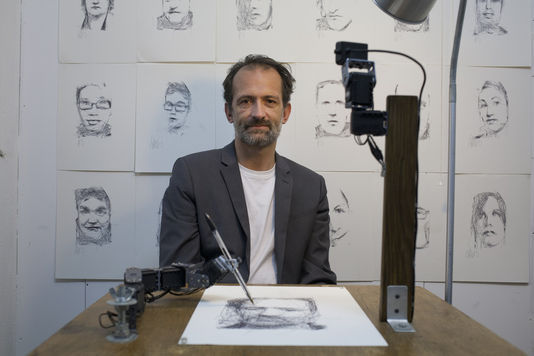
PATRIK TRESSE (PATRICK TRESSET) / Artist and scientist, creator of the robot artist Paul / Russia
For several years he was engaged in the creation of a robot, Paul, who knows how to draw as well as a living person. For the creation of this robot, Patrick Tresse studied and analyzed thousands of graphic works of artists of different styles and eras for many years. The idea of the programmer was implemented through software that supports the algorithm for the movement of a mechanical arm, which is the design of the robot. At the moment, the activity of Patrick Tresse is aimed at improving his creation and trying to teach him different manners of drawing famous artists, so that in the future the robot has its own style of drawing.
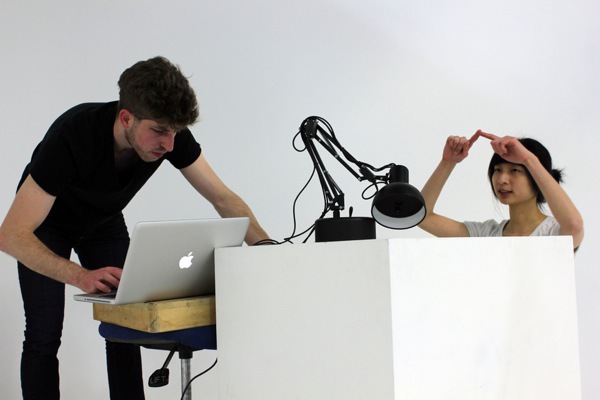
ADAM BEN-DROR (ADAM BEN-DROR) / Industrial Designer, University of Victoria, Wellington / Australia
He studied industrial design at the University of Victoria in Wellington. Adam is primarily engaged in creating objects that are examples of the balance between aesthetics and functional utility. The catalyst of his work is the passion for exploring the synergy between beauty and utility. The basics of his work are experiments with various materials, balance and scale. He is also interested in creating products for animals and introducing new media technologies into his projects. In recent years, Adam has received numerous awards, including the Click Suite prize for innovations in media design (2012) and the New Zealand Best Awards gold in the category of interactions (2013).

UMBERTO GIRAUDO (UMBERTO GIRAUDO) / Lecturer at the British Higher School of Design and curator of the Industrial Design course, founder of Design Zavod studio / Italy
Lecturer at the British Higher School of Design and curator of the Industrial Design program. He graduated from the Polytechnic University of Milan with a degree in Industrial Design. In 2002, he worked in collaboration with Professor Toshiro Ikegami for the Japanese Eco-Design Network. He was engaged in car design, design management and organizational issues at the Geneva Motor Show. In the subsequent time, he develops a concept for the development and modeling of the surface for new fire equipment at airports.
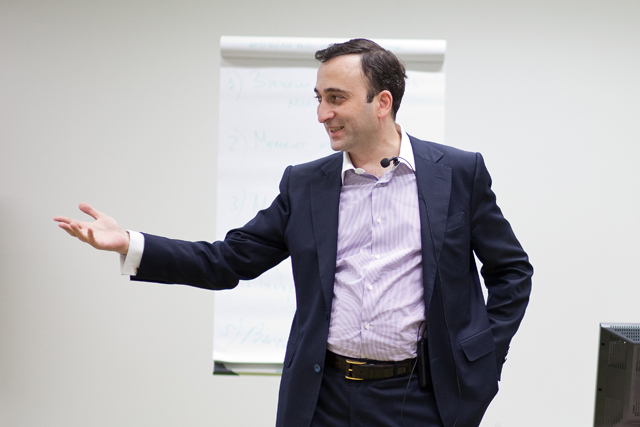
GOR NAKHAPETYAN (GOR NAKHAPETYAN) / Founder BALA ROBOTOV, entrepreneur and adviser to the rector of the Moscow School of Management SKOLKOVO / Russia
Gore began his professional career in 1992 at DialogBank. He joined Troika Dialog in 1993 and was at the origin of the company. From February to September 2013, Gor Nakhapetyan held the position of Vice President of Sberbank. Within this position, he oversaw the HR unit, among whose key tasks are the formation and development of corporate culture, the improvement and development of the employee motivation system, the creation of a corporate university, and the creation of an effective communication system within the organization.
Since 2006, he has been a member of the Coordination Council of the Moscow School of Management SKOLKOVO, as well as the Chairman of the Personnel Committee.

FRANCESCO FREESA (FRANCESCO FREZA) / Architect, founding partner of Piuarch studio, best architect of Italy 2013 / Italy
Today, Piuarch studio’s resume includes dozens of projects, including the development of showrooms, business centers, fashionable headquarters, villas and shops. It is this studio that is responsible for the style of Dolce & Gabbana boutiques, and it is this studio that developed the functional design of Passage 15 and Helen Marlen 2.
He believes that in both spheres of his activity the same principles lie - the success of the work of both the designer and the architect depends on the clear weathering of proportions, the harmonious combination of volumes and the selection of materials.

GIORGIO METTA / Creator of the humanoid robot ICub, director of the iCub division of the Italian Institute of Technology (IIT) / Italy
The research activity of the scientist is concentrated in the field of biologically motivated robots. Giorgio also takes part in the development of humanoid robots that can adapt and learn from their own experiences. His research was developed in collaboration with leading European and international scientists from various disciplines: neuroscience, psychology, computer science and robotics. Giorgio Metta is the author of about 250 publications. He has worked as a principal investigator in more than ten international as well as national projects.

VLADIMIR KONYSHEV (VLADIMIR KONYSHEV) / CEO of Neurobotics / Russia
Vladimir Konyshev - MD, head of Neurobotics, which specializes in the development and supply of systems for the study of human and animal physiology. It is one of the key figures of the initiative group of the strategic public movement “Russia 2045”, which stands for human development, including by accelerating technological progress and integrating modern technologies.
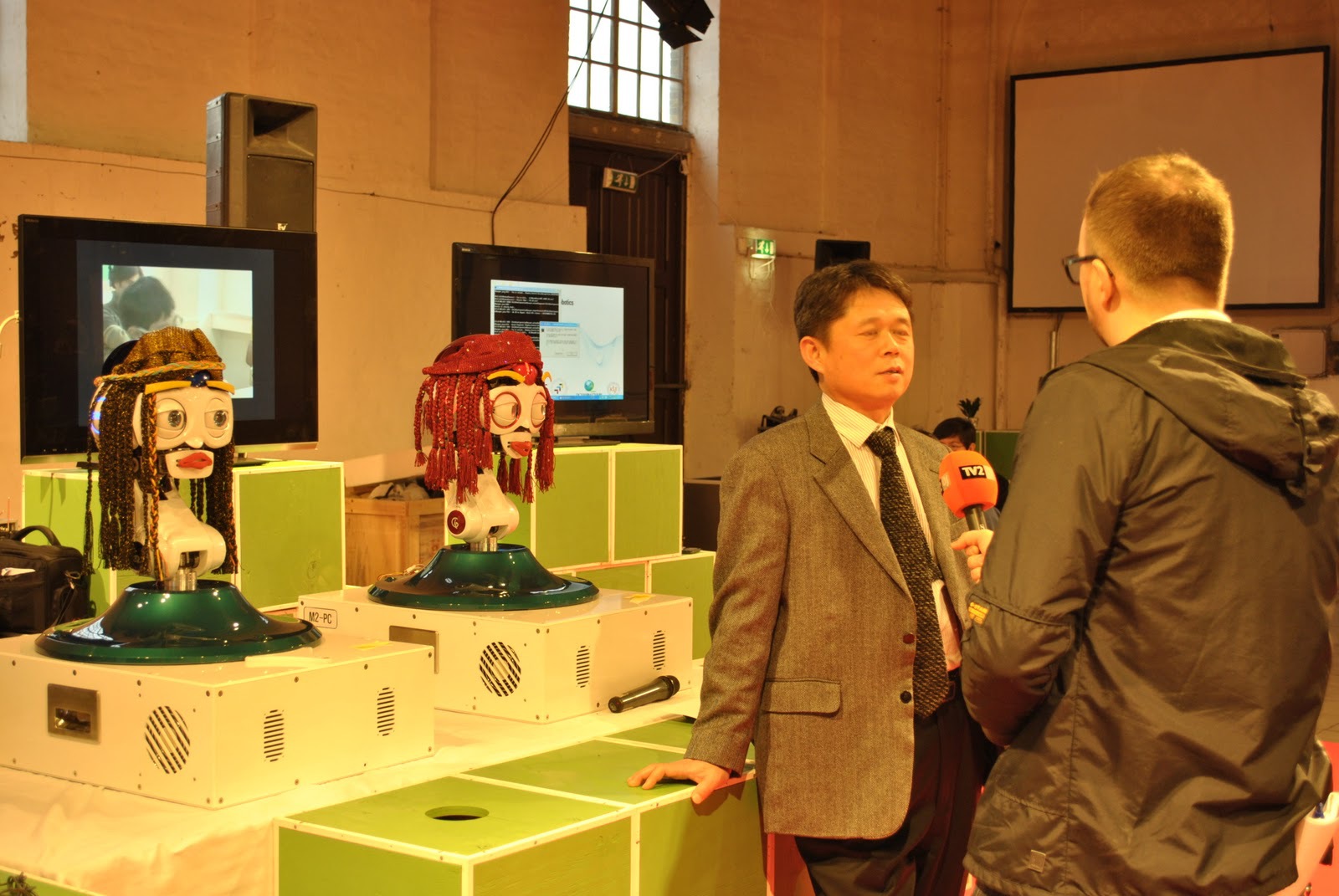
KIM MUNG SUN / Director of the Center for Intelligent Robotics at the Korean Institute of Technology, member of the team of robots Mero, Kibo, Ciros and Silbot / Korea
Kim Munsang received a master’s degree from Seoul National University, after which he defended his doctoral thesis in technical sciences at the Technical University of Berlin (Germany). He is the author of numerous scientific articles and books on robotics, and also regularly participates in conferences. Received more than 20 awards for research and technological development.
He currently holds the position of Director at the Center for Intellectual Robotics at the Korean Institute of Technology, and also participates in the creation of robots Mero, Kibo, Ciros and Silbot.

LOUIS PHILIP DEMER (LOUIS-PHILIPPE DEMER) / Designer Blind Robot Professor at the School of Art, Design and Media at the Nanyang Technological University / Singapore
Louis-Philippe Demers is known for his large-scale dramatized robotic productions and interactive media projects. In the past two decades, he took part in 70 art projects and designed more than 300 robots. His works were presented at the largest venues, he himself took part in numerous international exhibitions and festivals. Louis-Philippe Demers is the laureate of many prizes, awards and awards, including the first prize of the international competition for artificial life projects VIDA 2.0 (Madrid, 1999). From 2001 to 2005 he was a professor at the Higher Art School of the Center for Arts and Media Technologies (ZKM, Karlsruhe).

FRANCESCO FERRO / General Director of PAL Robotic, the company that created REEM / Italy
An expert in the field of robotics. He received a master's degree at the Higher Institute of Electronics (Lille, France), as well as an MBA degree in "Business in the field of high technologies." Since 2011, he has been the CEO of PAL Robotics (Barcelona, Spain), specializing in the creation of humanoid robots. The main development of the company - the line of humanoid robots REEM; currently released 5 models. The latest generation is a REEM – C robot, able to see, speak, recognize faces and speech in several languages, independently navigate the terrain.
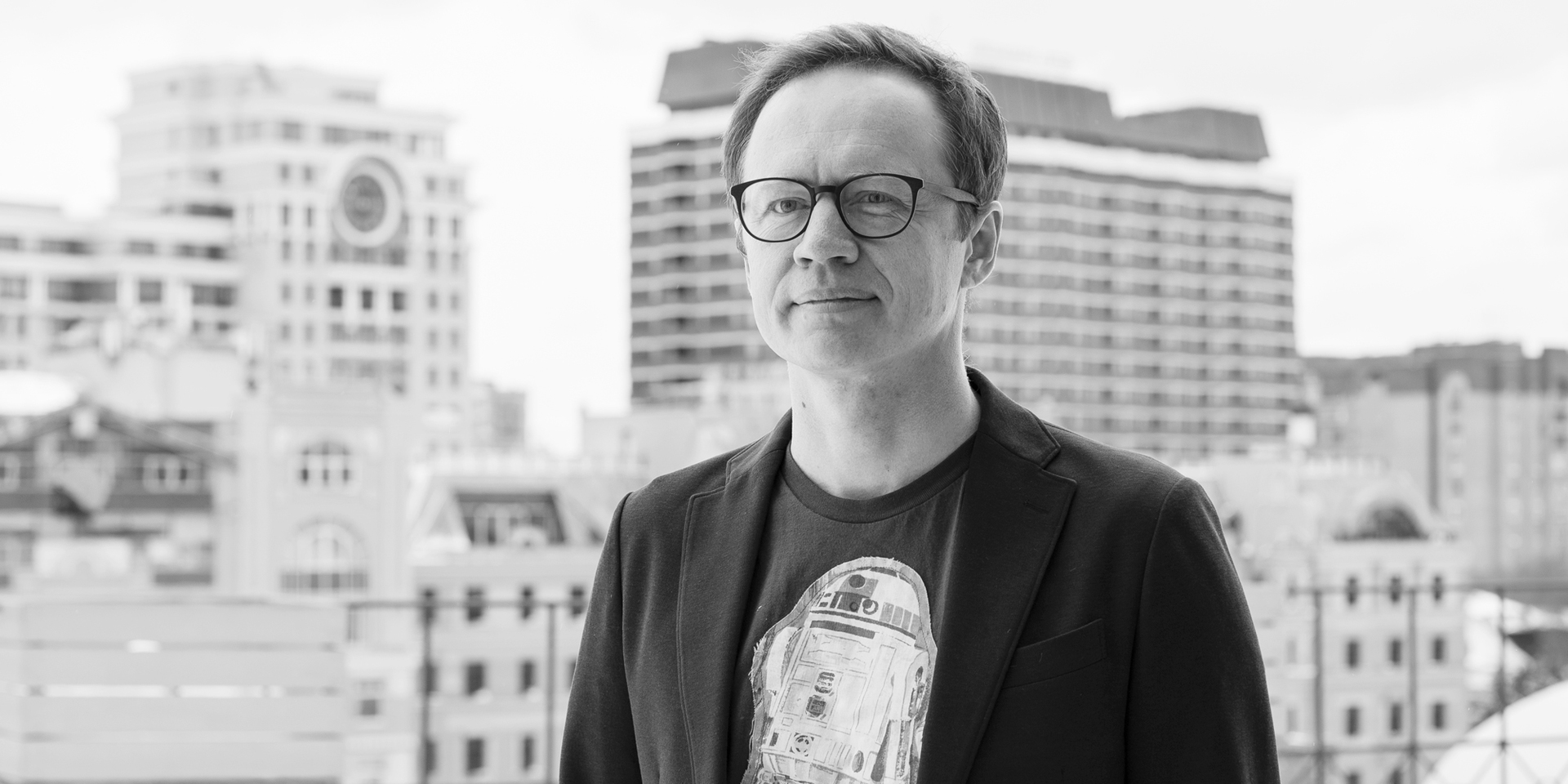
MAXIM KASHULINSKY / Editor-in-Chief of the SLON portal / Russia
Business journalist, media manager, business expert. He graduated from the Faculty of Philosophy of the Lomonosov Moscow State University. He began his journalistic career in 1994 at the Skate news agency. Then he worked as a correspondent for the Business section of the Segodnya newspaper, chief editor of the Kompaniya magazine, and served as deputy editor-in-chief and editor of the Consumer Market department of the Vedomosti newspaper. In September 2003, Kashulinsky began working at the publishing house of Axel Springer Russia, in which he occupied the position of editor-in-chief, and later - chief editor of Forbes magazine. Since March 2011, the CEO and head of the Slon.ru portal, from January 2012 - Acting General Director of Bolshoy Gorod LLC.

WILL JACKSON / Head of Engineered Arts Ltd, creator of the RoboThespian robot / USA
Design engineer, creator of Robo Thespian and SociBot. In the past, Will Jackson designed interactive stands for museums and exhibitions. Having received several orders for the development of "mechanical actors", he came to the conclusion that it was necessary to create a universal programmable model. He later decided that the “actors” needed the ability to interact. So there was the company Engineered Arts, engaged in the creation of humanoid robots. The first versions of the robots were rather clumsy, but the creators continued to improve the robots and managed to achieve significant success.

CHRIS WAKE / Vice President, Business Development, NanoSatisfi / USA
Chris Wake is a strategist in creating commercial products for the company NanoSatisfi, a serial entrepreneur, an Oxford graduate. Chris Wake worked and was a leader in both large and small companies. His work has been featured in publications such as Forbes, The Huffington Post and Wired. Since February 2013 she has been working at Nanosatisfi, a company that launches satellites into open-source orbit. In just one year, they were able to independently create and launch three models, but they do not intend to stop there.
Words written by Chris Wake about himself in his blog: “I do cool things. In space. "" I consistently transform chaos into process ".
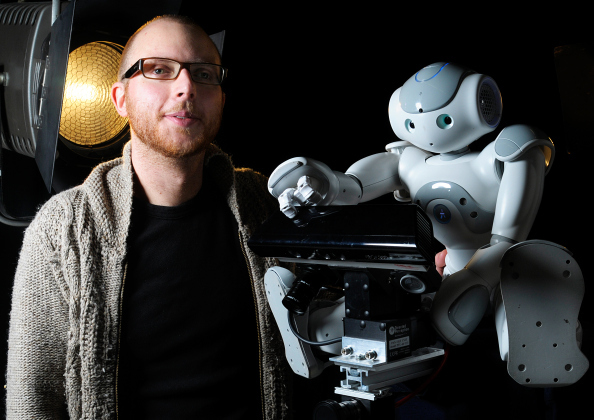
NICK HAWES / Senior Lecturer at the School of Computer Science in Birmingham, an expert in artificial intelligence / England
Nika’s core business is the field of application of artificial intelligence and methods of creating intelligent autonomous robots that could work for humans. Nick Hayes has worked for many years on processing information for building intelligent systems, introducing AI planning methods into various robotized systems. At the moment he is the coordinator of the “STRANDS” project, focused on the production of intelligent mobile robots. Nick Hayes also participated in many programs and events: BBC News; BBC World Service; British Science Festival; Cheltenham Science Festival, where he actively conducted lectures on his research.
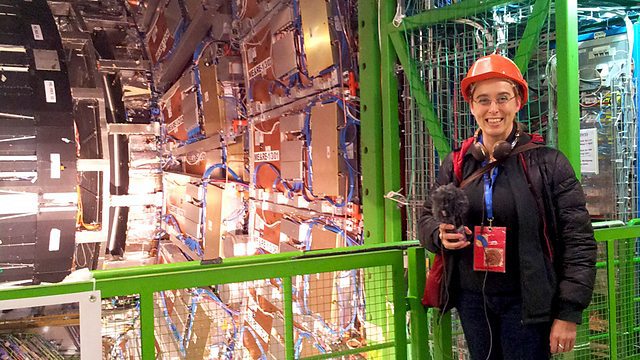
TIMANDRA HARKNESS / Writer, BBC Radio 4 journalist, famous British popular science presenter, stand-up comedian / England
Timandra professionally engaged in a comedy on a scientific theme. Now she performs with the solo show “BrainSex”. In the past she worked on a comedy research project with Matt Parker, this project resulted in a stand-up show with which they performed in England and Australia. Very often acts as a moderator or moderator at various scientific and political debates. Among other things, she writes scripts for films, radio programs and scientific exhibitions.

VYACHESLAV KOZLOV (VYACHESLAV KOZLOV) / Specialist in the field of innovative strategies, co-founder of Summon, member of the European Council of the Internet of Things, mentor of start-up accelerators in Italy and Holland / Russia
Vyacheslav Kozlov is a well-known futurologist and futurodesigner, sociologist, psychologist, co-founder and head of Summon, whose activities are aimed at developing scenarios of a possible future in the field of innovation and strategic planning. Vyacheslav is also the leader of the IACS field program “Knowledge Economy: Design Thinking as a New Approach to Solving Business Problems”. He worked for more than a decade in the Strategic Future Design department of Phillips Design in the Netherlands. Vyacheslav participated in many projects for the study and analysis of possible scenarios for the development of industries, countries and enterprises, and also participated in the creation of innovative solutions, products and services for many companies, including Phillips. Made some contribution to the study of human behavior, ethnographically-directed,cross-cultural and collaborative research.
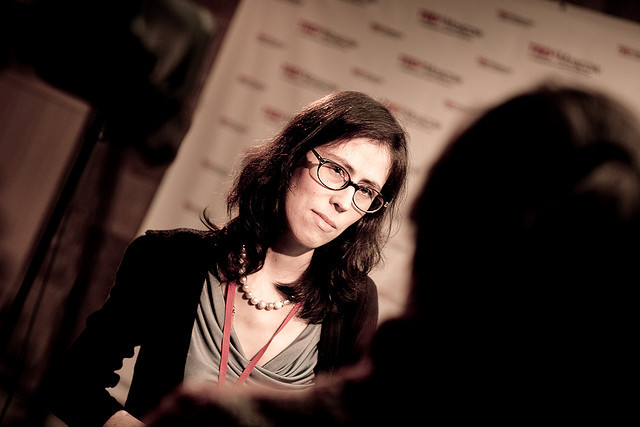
(EKATERINA KHRAMKOVA) / , - Lumiknows /
Ekaterina Khramkova specializes in the development of innovative products (New Product Design & Development). Ekaterina is one of the first in Russia design researches in the field of consumers and the context of using products, services, brands, identifying difficult-to-form consumer preferences. Ekaterina Khramkova is also a developer and teacher of design research and forecasting at the British Higher School of Design in Moscow and a leading speaker on design thinking and innovation at Harvard Business Review - Russia. In 2005, Catherine won a British Government scholarship in the direction of “Creating and Developing a New Product” (New Product Development), which helped her to get a British Master of Arts: Design & Branding Strategy degree from Brunel University.
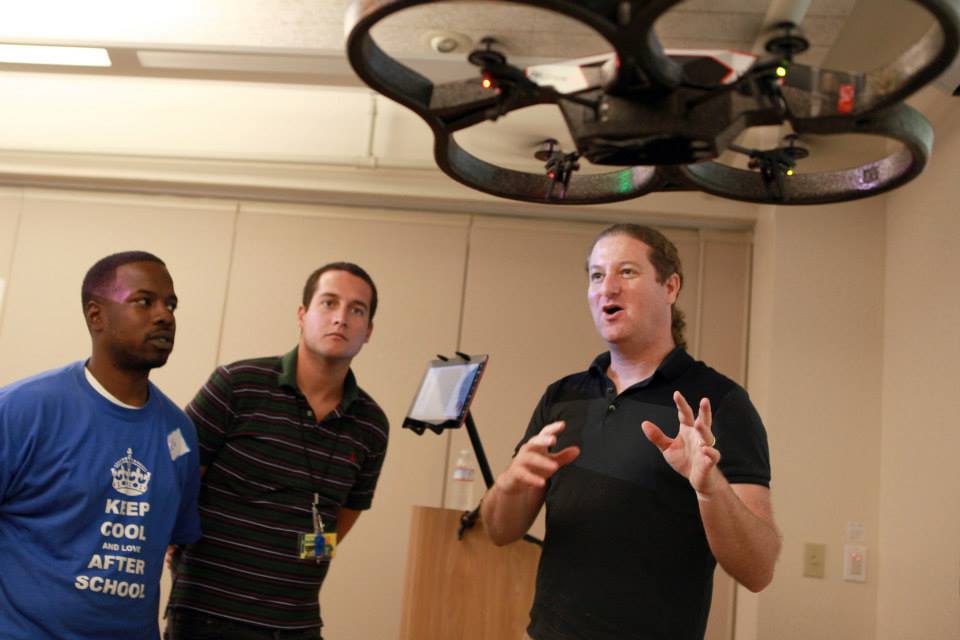
(ELAD INBAR) / ONLINE / RobotAppStore /
In 2011, the first online application store for robots RobotAppStore began to work in test mode. In 2012, it became available to all users, now there are applications for 10 models of robots. RobotAppStore was founded by serial entrepreneur Elad Inbar. Previously, he created MassiveImpact - a mobile marketing platform, as well as a robotsLab robot store. “I worked with customers and realized that everyone needs approximately the same applications, but there is no platform where you can buy them. Opening an app store is a milestone in the history of robotics. ” Inbar believes that a cheap and understandable consumer robot will appear in the very near future, but does not undertake to predict in which country this will happen. “It can be invented anywhere, really,” Inbar smiles and notices that investors all over the world are keenly interested in robotics,but rarely anyone starts to act, which inhibits the industry.

REMY GLAISNER / Co-founder of Myria Research / USA
Remy Glaisner is the co-founder and analyst of Myria, which participates in events dedicated to the main trends of robotics and intelligent systems and their impact on the development of business and the market. Research & Advisory - Myria offers services that provide clients with constantly updated independent research. The data obtained during the research allows the company's customers to increase their efficiency, competitiveness in the market and promote their business.
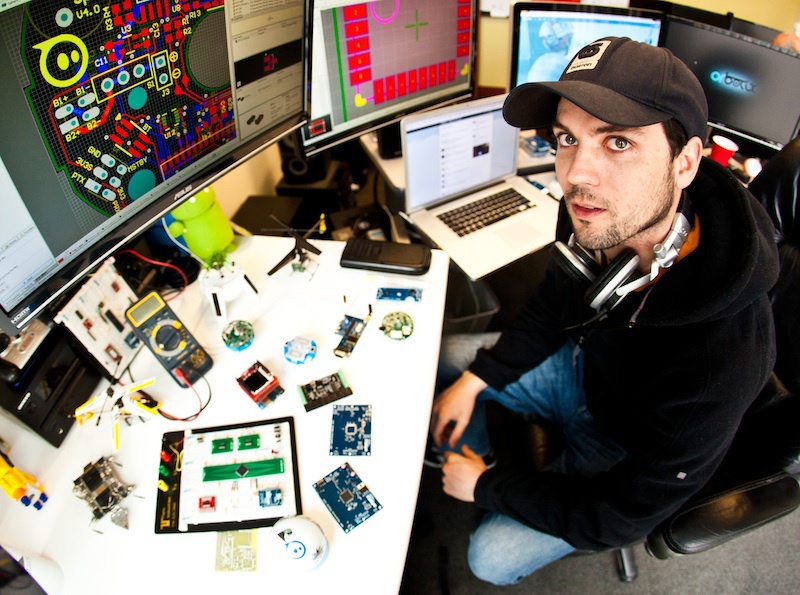
IAN BERNSTEIN (IAN BERNSTEIN) / Co-founder and Chief Technology Officer of Orbotix / USA
Since childhood, Yang was interested in electronics. At the age of 12, he took part in BEAM International Robot Games, which sparked his interest in robotics for life. Under the leadership of Mark Tilden, a famous specialist in the field of robotics, Ian created robots not only as a hobby, but also for university projects, international competitions in robotics, and even for the science center of the Houston Space Center. “We have created toys that combine new technologies with the latest innovations in robotics, and proposed a new kind of games in open space. With our smart robots and open source software, we hope to inspire the next generation to become inventors and programmers. We create funny robots,that bring innovative, augmented reality mobile games to your smartphone. ”
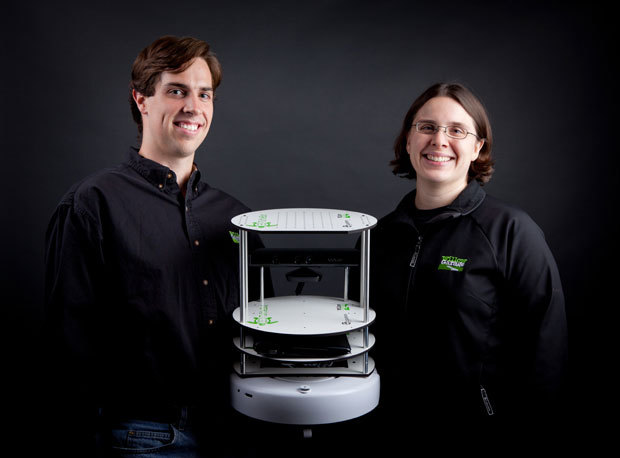
MELONEE WISE / CEO and Co-Founder Unboundedrobotics / USA
CEO & Co-Founder Unboundedrobotics. Before becoming one of the founders of Unboundedrobotics, Meloni was the development manager for robots at Willow Garage, leading a group of development engineers for the next generation of robots. For more than ten years, she has been involved in the development and design of various hardware and software for robots. Some of her projects included the development of algorithms, libraries and equipment for autonomous boats, cars, and personal robotic platforms. In Willow Garage, Meloni was one of the creators of an inexpensive personal robot with affordable software.

ALEXANDER REBEN / Robotics and artist, BlabDroid creator, MIT / USA media lab researcher
Alexander Reben is developing robots and new interfaces for experimental research on the relationship between humanity and technology. His work has been featured at Ars Electronica, MIT, Axiom, Eyebeam, The Whitney Biennale, and has been featured in New Scientist, Fast Company, BBC, CBC, Hack Day. After his MIT thesis "Boxie", he was invited to speak at the TED conference. A recent interactive installation by Alexander "Resident Robot" is the first documentary completely filmed and directed by robots. The premiere took place at the Doclab International Documentary Film Festival in Amsterdam.
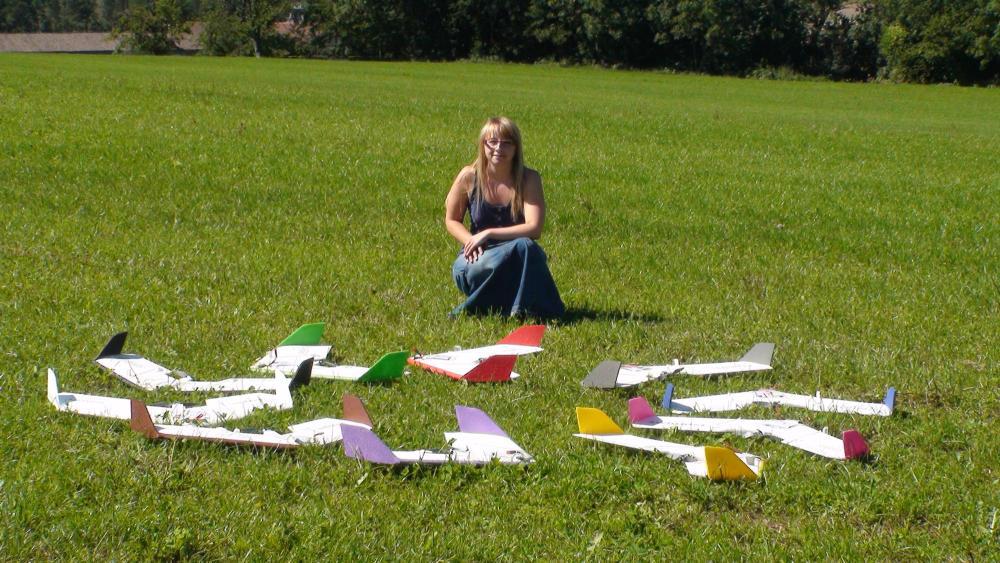
SABINE HAUERT / Representative of the Massachusetts Institute of Technology, researcher in the field of nanorobots / USA
Sabine Hayar - a scientist from the laboratory MIT + SNSF (Switzerland). Her professional interests: design of large self-organized robotic systems, inspired by natural phenomena based on a large number of microdrones with further use in medicine (the human brain, the immune system).
Sabine has extensive experience in popularizing science on resources such as Robohab / Robopodcast / Autonomous Robots (Springer), her articles and interviews have been published many times in CNN, The Wall Street Journal, Wired, Engadget, PopSci, and New Scientist.
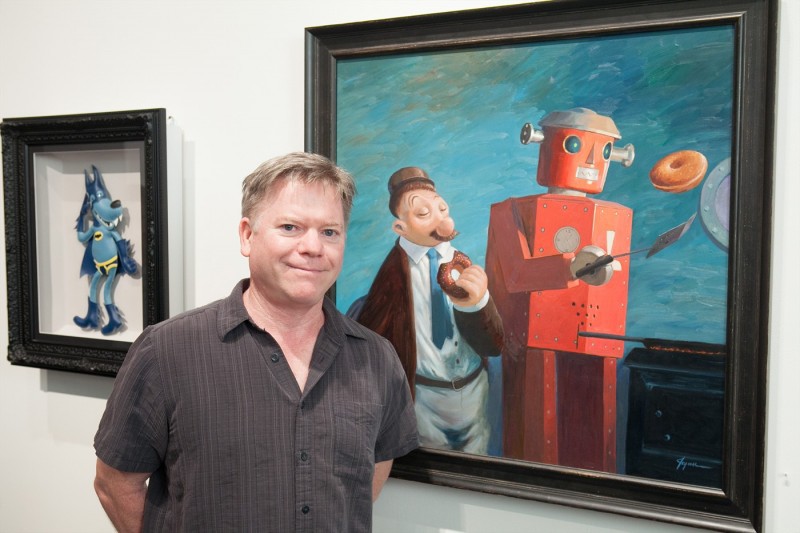
ERIC JOYNER (ERIC JOYNER) / Illustrator. In his work he chose a robot as the main character of his works.
In 1983, Eric graduated from the University of San Francisco. For over 20 years now, he has worked as a freelance illustrator and has collaborated with a number of companies, such as Mindscape, Spunky Productions and Midland Productions. Joyner's works are exhibited in New York and California, and the artist himself has many awards.
The themes of his paintings are fiction, and the main models are robots. Joyner's robots are often travelers. The old vision of the future, which will never come true, is a background image of his paintings, where robots based on Japanese toys are created. Robots in his paintings often struggle with each other or with the classic sci-fi monster.

MARTIN BRITZEL (MARTIN BRICELJ BARAGA) / Artist and program director. Founder of the MoTa Museum. The creator of the concept of art object RoboVox
Baragi's work is devoted to the study of the interaction and relations between man and machine, which today play an important role both in pop culture and in the political and social life of society. Martin is the author of interactive works based on the creation of new situations in the public space.
In his works, he positions time as a key element. All his works can be considered as a social experiment, which is aimed at the study of art production in emergency situations.

NEIL HARBISSON / Contemporary artist, musician and cyborg activist, widely known for his unique ability to “hear” colors.
Artist Neil Harbisson was born with a complete inability to distinguish colors. However, now using a special device called Aiborg - a cyborgized eye, which consists of a webcam, a computer and headphones, Harbisson can literally hear 360 different colors, some of which are indistinguishable to the human eye. Neil became the first person in the world to be allowed to take a passport photo with a cyborg device on his head, was considered by some to be an official recognition of Harbisson as a cyber. In 2010, Neil founded the Cyborg Foundation, an international organization that helps people become cyborg and fight for their rights. www.ted.com/talks/neil_harbisson_i_listen_to_color
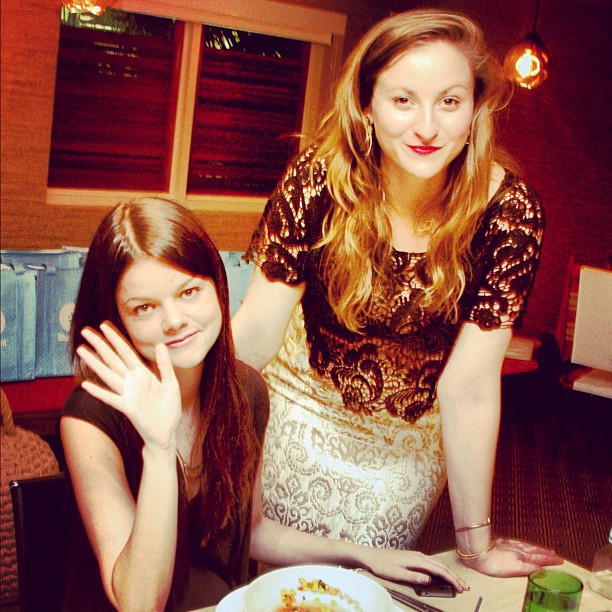
(MONICA LOCASIO) / , , - art & science, CultureShock /
From talented parents, Monica received an insatiable desire for knowledge, a sensitive ear, a keen eye for aesthetics and an extraordinary ability to work in various disciplines. Having started her career in New York as a co-publisher and art director of Overspay, Lokacio soon became director of PAPER magazine, working on which, in turn, led her to the position of art director of EXTRAEXTRA, a staff marketing agency of PAPER magazine, where she worked on promoting brands such as American Express, Absolut, LANVIN, Mattel and Target. Monica was also the author and editor of several publications for the publishing houses Rizzoli and ABRAMS and was an independent curator of a number of art galleries in New York and Vienna. Before becoming part of the creative agency Culture Shock, Lokasio worked as executive producer of the SCOPE Art Show - the first exhibition,which combined developing contemporary art and programming.
Registration for the Roboforum is here .
Source: https://habr.com/ru/post/222049/
All Articles